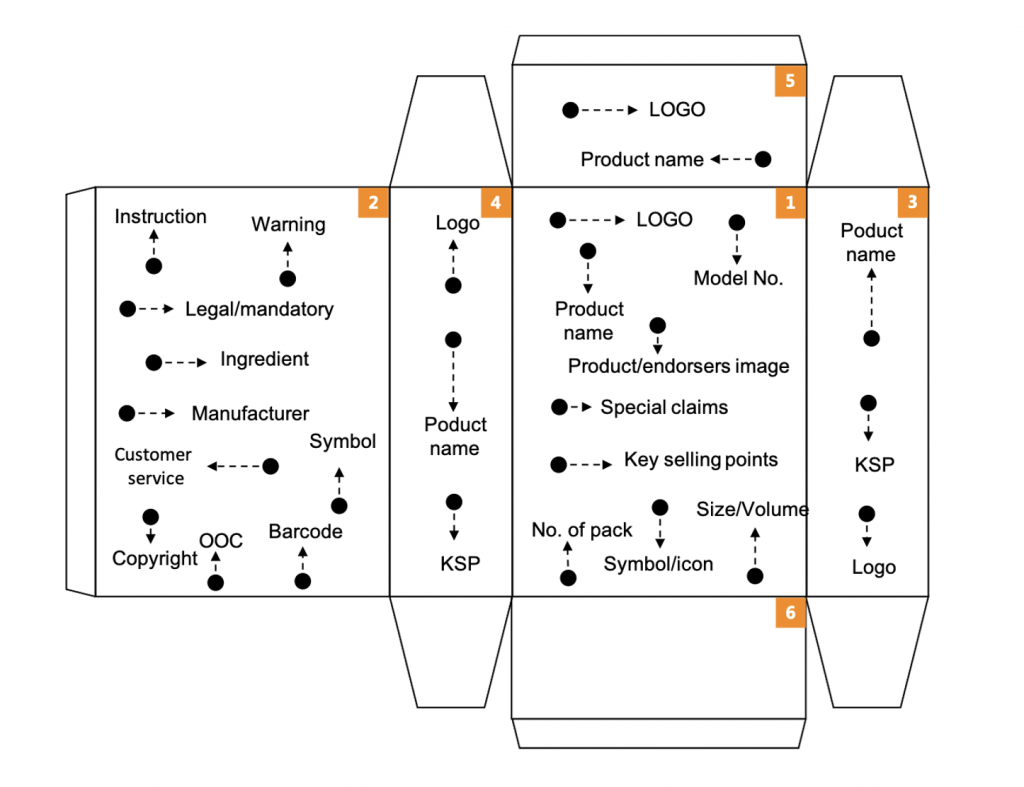
- Color
The color wheel is still a valuable tool for graphic designers, looking for aesthetically pleasing color combinations. When selecting hues for a project, consider colors that appear directly opposite or beside each other on the color wheel — these tend to produce the most consistently pleasing combinations.
2. Line
lines can form the underlying architecture of your project. Defining the line of movement in your composition before you get started can help you construct a design that achieves the desired mood. Mood lines don’t have to be visible in your final composition – they can simply act as a guide to provide structure and direction as you work. Of course, line can also be visibly incorporated into your final design as well.
3. Scale
The scale of different elements in a design will have a big impact on how your audience views and makes sense of your composition. Playing with the relative size of different components in your design allows you to set a focal point, highlight areas of importance, and ultimately guide viewers’ eyes through the piece. You can use scale to create a visual hierarchy for your design. When an element is displayed at a relatively larger scale than the other elements in a composition, our eyes are naturally drawn to it.
4. Shape
A shape can be loosely explained as anything defined by boundaries. There are two categories of shapes to consider, When working on a design, consider both the shapes you’re deliberately incorporating (the positive shapes), and the shapes naturally formed around those shapes (the negative shapes).
5. Alignment
Think of alignment like an invisible axis that runs between elements, connecting them visually either by their edges or centers (see the image below). Alignment most frequently comes up in design discussions about text and typography, but it’s equally important to consider the alignment of non-text elements when building a balanced, orderly composition.
6. Contrast
Without contrast, our designs aren’t just lackluster and boring to look at, they’re also difficult to understand. A lack of contrast is often what separates mediocre design work from designs that look professional, polished, and clear.
7. Space
Space is exactly what it sounds like: the empty areas between elements in your design. When it comes to creating professional-looking designs on your own, sometimes what you don’t include is just as important as what you do. When working on a design, consider not only the elements you’re including (such as images and text) but how they’re arranged and grouped in the composition. It can be tempting to fill every inch of your digital canvas with something, but try to give your elements some room to breathe.
8. Texture
Texture is the feel of a surface—furry, smooth, rough, soft, gooey or glossy. Most graphic designers must visually convey texture by using illusions to suggest how their work might feel if viewers could touch it. Mastering texture is an important part of making designs look polished and professional. There are different ways to experiment with texture in your design work. If you are inspired by nature, you may want to work with organic textures, drawing inspiration from leaves, tree bark, stones, fur, flowers, grass and soil.
9. Type
Whether you’re choosing a font or creating your own typography for a graphic design project, it’s important to make sure the type you use is legible and appropriate for your subject. Type affects the overall mood of a design, so consider whether your letters should be print or script, and whether they should have angles that are sharp or rounded. The weight of your lettering is also an important part of your design. Typically, large or thick letters convey that the words they convey are important.
10. Image
Whether graphic designers use photographs or illustrations, they rely on images to grab the audience’s attention and express specific messages. An image works on multiple levels simultaneously: It provides context for a designer’s communication, adds necessary drama or action, and creates an overall mood. When incorporating images into your work, it is vital to find a picture that tells the right story and maximizes visual interest. You could choose an image with a lot of contrasting colors and textures, which offers viewers a visual feast to keep audiences interested.
